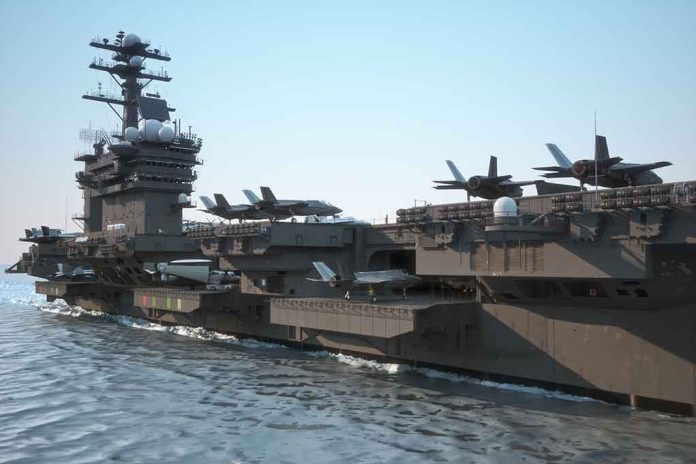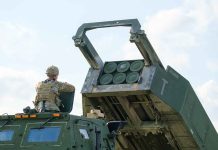
The Pentagon’s decision to withdraw the USS Theodore Roosevelt from the Middle East marks a significant shift in U.S. military strategy, potentially leaving the region vulnerable to increased tensions and emboldening adversaries.
At a Glance
- USS Theodore Roosevelt and Destroyer, USS Daniel Inouye are redeploying to the Indo-Pacific Command area in Hawaii
- The rare move of keeping two Navy aircraft carriers in the Middle East has concluded
- The finite carrier fleet struggles to meet global demands, with only 11 carriers available
- Extended deployments and maintenance delays are straining the Navy’s carrier fleet
Strategic Shift Leaves Power Vacuum in Middle East
The U.S. Navy’s decision to withdraw the USS Theodore Roosevelt from its station in the Middle East signifies a major strategic shift in American military posture. This move, while potentially necessary for fleet management, leaves a concerning power vacuum in a region already fraught with tensions. The absence of a strong American naval presence could embolden adversaries and upset the delicate balance of power that U.S. forces have long maintained in the area.
The redeployment of the USS Theodore Roosevelt to the Indo-Pacific Command area, along with the destroyer USS Daniel Inouye, underscores the Biden administration’s pivot towards countering China’s growing influence. However, this strategic realignment comes at a cost to America’s deterrence capabilities in the Middle East, and the protection of Israel, a region that remains critical to U.S. interests and global stability.
Strain on U.S. Naval Resources Exposed
The withdrawal of the USS Theodore Roosevelt from the Middle East exposes a critical weakness in America’s naval strategy: the inability of our current fleet to meet global demands. With only 11 aircraft carriers available, the U.S. Navy is stretched thin, struggling to maintain a presence in multiple hotspots around the world. This limitation is not just a matter of numbers, but also of maintenance and crew readiness.
“There really just aren’t enough ships to go around,” Bradley Martin, a retired surface warfare officer and director of the RAND Corporation’s National Security Supply Chain Institute told Navy Times. “Now, that’s not necessarily strictly, or always, a carrier problem. It’s also a destroyer or [amphibious assault ship] problem. But it’s a problem of size, it’s a problem of capacity.”
The strain on our naval resources is further exacerbated by extended deployments and maintenance delays. These factors not only wear down our ships faster but also impact the morale and readiness of our brave sailors. The Biden administration’s failure to address these issues promptly is putting America’s global military dominance at risk.
Implications for Regional Stability
The departure of the USS Theodore Roosevelt from the Middle East comes at a time of heightened tensions in the region. Iran-backed Houthi rebels continue to threaten shipping lanes, and the Israel-Hamas conflict remains unresolved. The absence of a strong American naval presence could embolden these bad actors, potentially leading to increased aggression and instability.
While the U.S. maintains other naval assets in the region, including ships in the eastern Mediterranean and the submarine USS Georgia in the Red Sea, the withdrawal of an aircraft carrier represents a significant reduction in America’s ability to project power and respond rapidly to emerging threats. This strategic void could invite further aggression from adversaries seeking to test the limits of American resolve.
The Need for a Stronger Navy
The current situation highlights the urgent need for a larger and more robust U.S. Navy. The Biden administration’s long-range shipbuilding plan, which aims for 11-12 carriers and 381 ships by 2042, is woefully inadequate given the growing global threats. America needs a Navy that can confidently project power in multiple regions simultaneously, without compromising our national security interests or overextending our resources.
To maintain America’s naval supremacy and ensure global stability, we must invest in our fleet, streamline maintenance procedures, and address the chronic understaffing issues plaguing our Navy. The withdrawal of the USS Theodore Roosevelt from the Middle East should serve as a wake-up call to policymakers about the urgent need to bolster our naval capabilities and recommit to America’s role as the world’s preeminent maritime power.






















